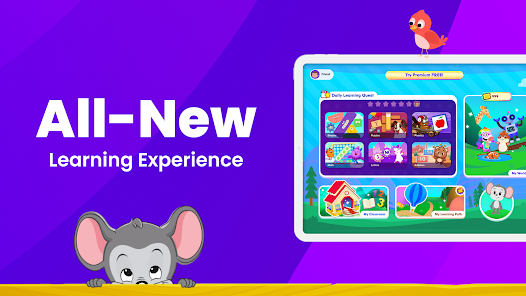Raising Curious Minds In A Digital World With Learning Apps
It’s a strange kind of tenderness watching a child swipe across a screen, wide-eyed, their tiny fingers dancing across colours and sounds and shapes. As adults, we inherited the magic of books and sidewalks chalked with alphabets. Today’s toddlers? They’re growing up with tablets. But maybe the point isn’t to panic, maybe it’s to participate.

1. The World Inside YouTube Kids
YouTube Kids has become a lifeline for many parents. Not because they want to plug their kids into a screen and walk away, anything but because sometimes, they just need ten quiet minutes. Or a safe space where their child can explore songs, animals, stories, and voices from around the world without landing in something strange or overstimulating.
2. When Learning Feels Like Play
If YouTube Kids is the library, then ABC Kids Learning Games is the playground. The best games don’t let up. They engage. They ask your child to try, then try again, gently. They reward attention spans as short as snack time and teach without noise or nagging.
3. Not All Educational Apps Are Created Equal
Of course, not every digital tool earns its place. There’s a difference between flashy noise and thoughtful design, between apps that hijack your kid’s attention and those that help build it.
The best educational apps for kids meet a child where they are with no shame, no scorekeeping, no rush to be “advanced.” They focus on confidence over correctness, on discovery over drills. And they never forget that the learner isn’t just a user, they’re a person, still forming their sense of self. You’ll know you’ve found a good one when your child starts asking questions after they close the app.
4. Tracing the First Letters of Confidence
A well-designed letter tracing app doesn’t replace that experience of writing; it enhances it. It adds colour, sound, and feedback. It gives a nervous hand a place to practice before it’s ready for pen and paper.
It’s not about rushing literacy. It’s about confidence. And for some kids, especially those with different learning needs or less access to hands-on teaching, that little screen becomes a big ally.
5. The Parent Isn’t Replaced — They’re Reinforced
These tools — the videos, the games, the tracing screens — aren’t here to do your job for you. They’re here to do it with you. In between real-life moments: spilt juice, tickle fights, rushed breakfasts.
What they offer is structure. Support. A rhythm. Not perfection.
Because the truth is, children still learn best when they feel safe, seen, and supported. An app might teach the alphabet, but only you can teach them how it feels to be heard, loved, and encouraged when they try.
6. Final Thought:
Maybe it’s time we reframe the conversation. It’s not about screen time versus story time. It’s about finding ways to make both meaningful. A good video. Smart game. A thoughtful tracing app. These don’t steal childhood. When used right, they support it.
Because that’s not just a kid learning, that’s a human becoming.
It’s a strange kind of tenderness watching a child swipe across a screen, wide-eyed, their tiny fingers dancing across colours and sounds and shapes. As adults, we inherited the magic of books and sidewalks chalked with alphabets. Today’s toddlers? They’re growing up with tablets. But maybe the point isn’t to panic, maybe it’s to participate.